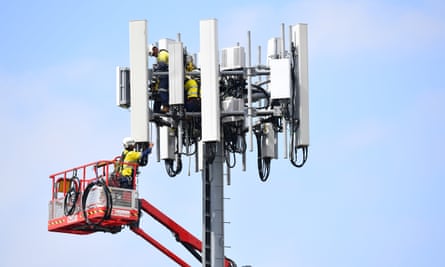If you've ever been through a city you might have noticed tiny 5G cell towers on street light poles. They appear like tiny boxes however, they're actually transmitting wireless signals from cell phone providers to your mobile.
They are replacing larger, purpose-built cell towers. Although they're not as visible but they can still cause problems for people.
The FCC's Radiation Exposure Thresholds
The FCC's Radiation Exposure Thresholds determine the maximum amount of time a person can be exposed to electromagnetic radiation from wireless devices. The limits for exposure are based on research that show that RF energy could be harmful to health.
The rate of absorption called the specific absorption rate (SAR) is a measure of the radiofrequency energy absorbed by tissue. It's typically 1.6 Watts per kilogram averaged over one kilogram of tissue.
Since 5g is able to transmit at higher frequencies this could be able to cause greater energy intensity on the skin and other exposed body parts. This can lead to various possible harms, like the formation of skin disorders such as dermatitis and cataracts and skin cancer.
Due to the potential for harmful effects of radiation from 5G, PSU has chosen to create a general maximum power density of four mW/cm2 averaged over 1 cm2, and never to exceed 30 minutes for all 5G services running at 3000 GHz. This limit for localization is in line with the maximum SAR that is spatially averaged at 1.6 W/kg averaged over 1 5 grams of body tissue, at 6 GHz.
The FCC's Maximum Exposure Thresholds for Maximum Exposure
If you've ever used a mobile phone, then you're aware that the safest location from the tower is around 400 meters away. This is due to the transmitting power of the cell tower is significantly increased the further away your location from the tower.

While this sounds like an ideal idea, the reality is that people who live close to towers might be more vulnerable to health problems. For what is a safe distance from a 5g cell tower , a study from 2014 in India discovered that people who lived within 50 meters from cell towers suffered significant more health issues than those who lived farther distance from them.
what is a safe distance from a 5g cell tower showed that residents who moved to areas further away from the cell towers saw their symptoms improve within a couple of days. what is a safe distance from a cell tower have demonstrated that exposure to extreme levels of radiofrequency electromagnetic fields (EMFs) can lead to brain tumors, cancer, and other health problems.
This is due to the fact that radiofrequency radiation, used for wireless communication, has the ability to be absorbed by the body's outer layer, which is the skin. This is important to understand because the skin acts as a shield against mechanical injury, infection by pathogenic microorganisms, and entry of toxic substances. The skin is the largest organ of the human body. It is responsible for keeping the integrity of the other organs.
The FCC's Minimum Exposure Thresholds for the Minimum Exposure
The FCC's Minimum Exposition Thresholds depend on several assumptions that aren't supported by evidence from science. This includes the false assumption that exposures of a short duration to RF radiation are safe due to the limited absorption into body (i.e., tissue heating).
The assumption also ignores the greater penetration of ELF parts of modulated RF signals and the effects of short bursts of heat generated by RF waves that are pulsed. These assumptions are not in line with current knowledge of the biological consequences of RF radiation. As such, they should not be relied upon for health-protection exposure guidelines.
Additionally to that, ICNIRP and FCC are limiting their radiation limits for local peak SARs, based on the peak spatial specific absorption rate (psSAR) which is not a sufficient dosimetric tool for determining the level of radiation exposure. In particular, psSAR is inaccurate when frequencies exceed 6 GHz. In addition, psSAR is not been evaluated for RF radiation that is exposed to other environmental agents such as sunlight. The interactions of RF radiation with other agents in the environment could result in antagonistic or synergistic effects. This would result in the risk of having adverse health adverse effects. For instance, exposure to RF radiation and sunlight could cause an increase in the incidence of skin cancer, as well as aggravate other skin diseases such as acne.
